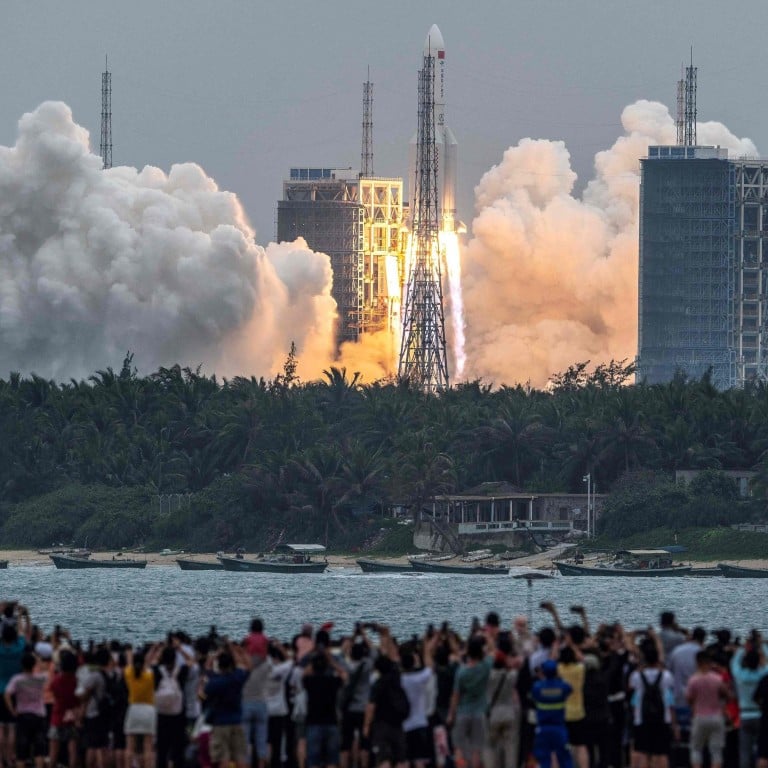
US keeps close watch on Chinese Long March rocket debris, expects re-entry on Saturday
- Wreckage being tracked from Californian air force base which monitors more than 27,000 man-made objects in space
- Chinese space programme insider expects the debris to either burn up while entering the atmosphere or fall in the sea
In a statement on Tuesday, Pentagon spokesman Mike Howard said the US was aware of and tracking the location of the rocket.
The “exact entry points into the Earth’s atmosphere cannot be pinpointed until within hours of its re-entry, which is expected around May 8”, he said.
The rocket was used to launch the core module of the Tiangong Space Station on Thursday.
The source, who works for China’s manned space programme, said most of the debris would probably burn up while entering the atmosphere because what remained was little more than an empty shell.
Song Zhongping, a former instructor with what became the Chinese military’s rocket corps, said he thought the debris would fall in a safe place such as international waters or uninhabited land.
Scientists from 16 other countries have joined the Tiangong programme and will contribute engineering expertise or team up with Chinese scientists to conduct a wide range of experiments, according to China’s space authorities.
Nasa administrator Jim Bridenstine criticised China over the incident.
“It was seemingly a successful launch, until we started getting information about a re-entry of a rocket body, a re-entry that was really dangerous,” he was quoted as saying by industry website SpaceNews.
“It flew over population centres and it re-entered Earth’s atmosphere. It could have been extremely dangerous. We’re really fortunate in the sense that it doesn’t appear to have hurt anybody.”

